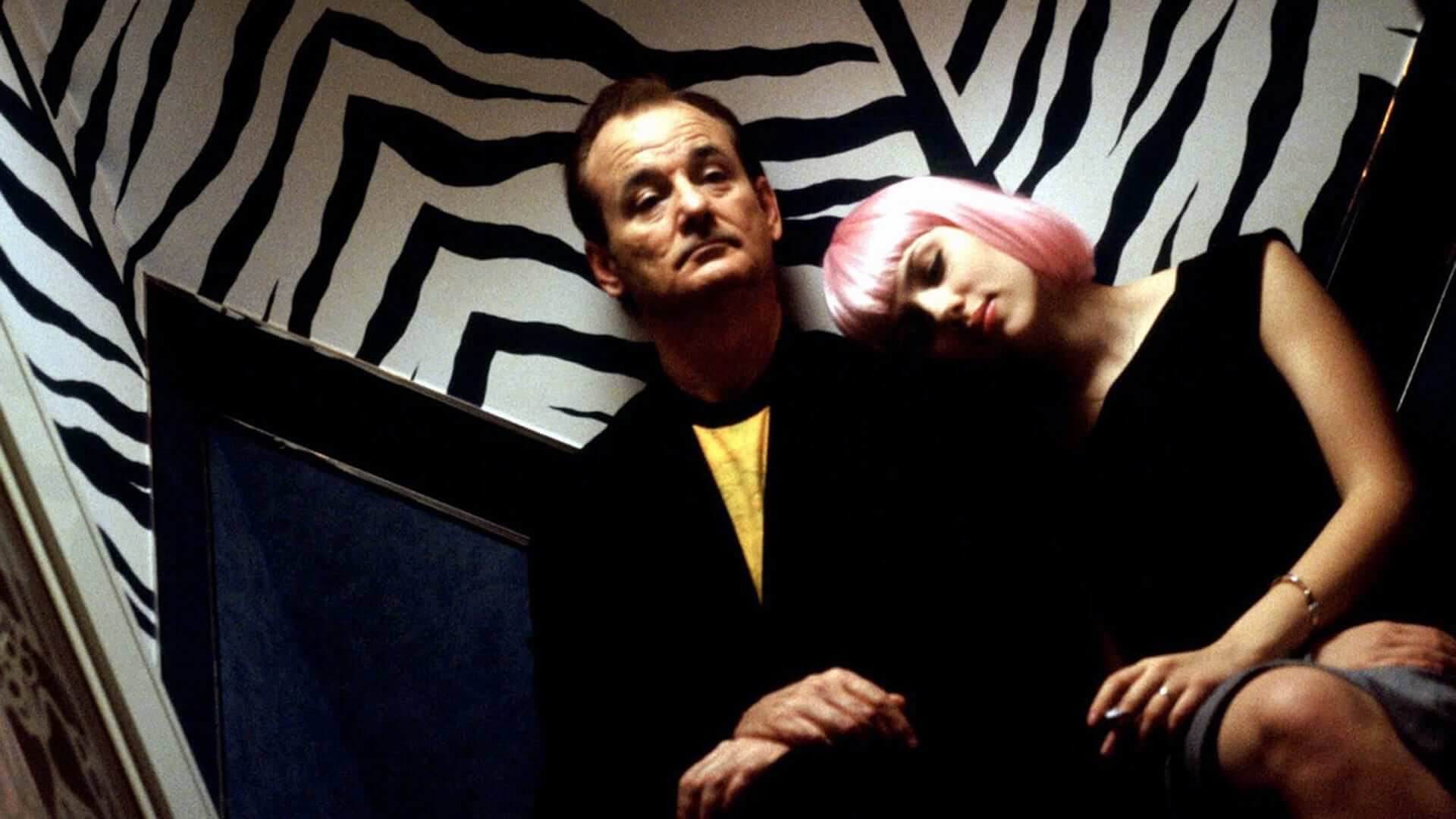A story told within reflections of reflections. Set to confuse the audience, Sofia Coppola highlights a sincere feeling of disparity between setting and character transfixing the viewer in a state of wonder as we gaze upon this new world of harsh lights and beaming neon. Lost in Translation recaptures emotions once lost to rebirth feelings of inadequacy and existence. Winning the Academy Award for Best Original Screenplay whilst securing nominations for various other feats, Lost in Translation was hailed as a masterpiece in 2003. But, how does it compare to modern standards?
Stargazing: One of the most impactful opening shots is Bill Murray’s Bob Harris drifting across Japan in a taxi – his eyes are the audience’s. This spellbinding view of Japan is so foreign to the Western audience with flashy electronic signs and wacky neon music it already sets in a feeling of awe but discomfort; for this is a large and unfamiliar environment. Further, the wit that Murray brings to this role is what makes him so endearing. He struggles to maintain a respectable career alongside a relationship (as a husband and father), so he clearly brings this snarky sarcasm to conversations as a defense for hiding his depression. And even when he is ‘happy’, there is an underlying sadness on his face. Until he meets Charlotte.
Scarlett Fever: A career high for youngster Scarlett Johansson as a naive university graduate yet to find her place in the world. She and Bob Harris are opposites in life but meet at a perfect moment – when both are lost. The chemistry sparks between them making for some genuinely heartfelt moments. We are also lucky enough to experience their relationship grow onscreen starting from awkward first encounters evolving to comfortably staring at each other in bed. Murray and Johansson are the keys to why Lost in Translation is so successful as they are simply so relaxed around each other.
Skimming Stones: Reflecting on Lost in Translation reveals that Coppola allows the scenes to speak to the audience, typically through indie scores. These allow the dense, bustling segments of Japan to burst into life as complemented by the hip soundtracks. More so, the purest of moments happen with just silence. Just Bob and Charlotte together. A bubble is created around these two that lets us knuckle down and focus on the unraveling emotions felt here. Total immersion follows allowing for the best in transcendental cinema.
Mirror Play: Perspective plays a big part throughout the film, and further in additional viewings. One may believe that ‘love’ is a heavy theme being explored but others may argue that themes surrounding ‘love’ play a larger part. For one, we never conclude that Charlotte and Bob are in love but rather, deeply infatuated with their counterparts’ personalities – especially since one is far older than the other. The genius is in the title. Not only are the characters 'lost in translation' but perhaps the viewer is also. Perhaps the very meaning of the film has quite simply been lost on us. The beauty of that is that every audience member can have a unique perspective on the outcome.
Cinematic Mastery: Reflecting on Lost in Translation over ten years after its original theatrical run proves how pure cinema of this quality can have a lasting effect in the future. This craftsmanship has been adored culturally and socially across its lifespan and is still receiving admiration. Audiences have an empathetic connection to the characters and setting having experienced such emotions one way or another. Coppola has a way of unhinging these lost feelings and capturing them in pristine detail.
Transcendental and reflective.
A true classic of modern cinema that still casts a ripple effect.

Watch Lost in Translation Now
